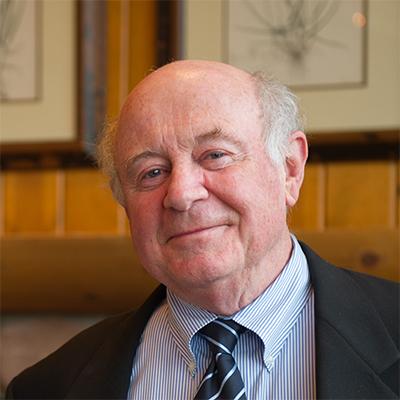Editor’s note: This blog series examines common narratives about charter schools, separates facts from fiction, and highlights legitimate issues that must be addressed. The full series is available here.
A common criticism of charter schools argues that they are run-of-the-mill, nothing special, a big disappointment in light of promises they would be laboratories for innovation.
While a few charter schools operate further outside the box, a classroom observer randomly visiting charter and district-run schools might not see many differences.
On average, charter teachers are younger and less experienced. They are more likely to have college majors in math and science and to match the ethnicity of their students. The methods and content of lessons might not be so different.
But such differences are not the only indicator of innovation, or the most meaningful one. As Robin Lake pointed out more than a decade ago, charter schools guaranteeing a stable and coherent version of the traditional “good school” might be offering something that is not available locally, even if it is available elsewhere. One example: E.D Hirsch’s Core Knowledge concept, which few school districts offer but many parents desire. From a nationwide perspective, Core Knowledge is nothing new, but it can be an important innovation for a local school system.
Indeed, the same observer would start to get a different impression if she were to focus on charter schools built around Summit’s highly individualized approach, Democracy Prep’s civics-focused curriculum, or the rigorous “no excuses” approach of a prominent national charter network like KIPP. Even in these organizations, some of the most important innovations might be happening behind the scenes.
Two undeniable differences between charter and district-run schools are the charters’ freedom (over staffing and their use of methods, time, and money) and their performance accountability (they will lose their charter and close if children don’t learn).
Until recently it was fair to question whether these attributes lead to anything else, such as distinctive school climates, greater teacher collaboration, and better student outcomes. CREDO at Stanford University’s first national findings that charter schools were on average no more effective than district-run schools cast doubt on the importance of these governance arrangements.
But research on charter schools did not end with the 2013 CREDO study. Newer research offers some important evidence. Charter schools are better positioned than district schools to adopt and faithfully implement personalized instruction and new approaches to teacher training, placement, and support. These findings first came out of RAND’s series of reports on the Partnerships for Effective Teaching, sponsored by the Bill & Melinda Gates Foundation. Despite massive infusions of philanthropic dollars, districts were far less able to than charter schools to fully implement practices expected to raise teacher performance, beyond collecting data and purchasing materials.
More recently, CRPE and RAND independently found that, compared to district schools also receiving financial support for personalizing instruction, charter schools had the freedom to more fully implement this educational improvement.
From CRPE’s 2018 study:
“[District] principals let teachers define personalized learning on their own, leaving academic rigor to chance and hindering school wide approaches. During the course of our fieldwork, personalized learning practices rarely got beyond a handful of pilot classrooms in most of the schools we visited. In those pilot classrooms, teachers often focused on changing structures in their classrooms (e.g., seating arrangements, stations) rather than on rethinking how teachers and students engaged with academic content. . .
Central offices, despite encouraging schools to experiment and explore personalized learning, generally failed to fundamentally change structures, policies, and supports to facilitate innovation in schools.”
From RAND in 2017:
“Charter teachers reported greater use of key aspects of learner profiles, such as more-fequent receipt and use of student data, and greater adaptation of course content to meet students’ needs. Charter teachers and students reported a greater extent of using and experiencing competency-based practices, such as being able to work on different topics than others and at their own pace. Key components of flexible learning environments, such as flexible use of space and staff, and use of technology, were reportedly more common in charter schools.”
Again from CRPE:
Charter schools in the [Gates Foundation-funded personalization] initatives had built-in flexibility. . . Their charter status allowed them nearly complete freedom to hire and manage their staff (including shifting staff assignments, class size, and schedules), design their instructional programs, and shape their professional learning—all of which were relevant to exploring personalized learning. Importantly, they could make all of these changes without consulting district administrators.”
The personalization-related innovations studied by RAND and CRPE didn’t originate with charter schools, but their full use depended on charter schools’ freedom of action and ability to orchestrate internal changes. A random nationwide sample of charter and district schools still might not detect these differences, but they are more obvious locally and are making important progress. Charter schools are better equipped to make real schoolwide changes in classroom practice and student experience, to go beyond the symbols of change and improvement to the reality of it, and to move innovation beyond the domain of a few enthusiasts to all the teachers in a school.
This is not a subtle advantage. Leaders in district-run schools often can’t choose their teachers on the basis of fit and have limited influence over what teachers do in their classrooms. As a result, if a school is nominally committed to an innovation, some teachers might fully adopt it while others ignore it.
Charter school leaders, on the other hand, can make adaptability and willingness to cooperate with schoolwide improvements a precondition of hiring, and teachers can see this screening as legitimate, not an assault on teacher professionalism.
At a time when all public schools are challenged to accelerate students’ movement into challenging career pathways, this advantage of charter schools cannot be exaggerated. Beyond the research cited above, examples of charter schools’ ability to incorporate new ideas include KIPP’s New Orleans high schools, which have evolved profoundly in light of graduates’ disappointing performance in college, and Rocketship’s continued adjustment of its blended school design when it could not replicate the results from the first schools it founded.
Two more recent examples from New Orleans drive this point home: Collegiate Academies created Opportunities Academy, a standalone school for older students with disabilities, and Rooted—a new school that is experimenting with new methods to integrate career pathways in computer science. These schools are breaking the mold in a city sometimes criticized for relying too heavily on “no excuses” models.
As CRPE’s recent reports on personalization make clear, district-run schools—with all their political, regulatory, and human resource constraints—can’t readily take advantage of new approaches to personalization, community and internet-based experiences. Nor can they give students full access status to expert practitioners who are key to career pathways (scientists, mathematicians, health care providers, artists, musicians, computer scientists, and community nonprofit and business leaders). Charter schools can do all those things now.
If charter school laws didn’t exist today, the challenges of economic change and new innovations in teaching and learning would force us to invent something very much like them. Today’s charter schools are not very innovative on average, but are much more open to change than district schools. They can become the places where innovations spread and where new ideas can be more fully implemented.
Future schools will need charter-like freedoms to fully take advantage of new ways to personalize learning to meet students’ interests and needs and provide meaningful experiences. Some school districts are trying to create schools that replicate the structural advantages of charter schools, as well as charter-like accountability for performance. Doing so fully may require state law changes.
District leaders, policymakers, and philanthropists who are considering caps and limits on charter schools should ask themselves whether they want to cripple or abandon a resource that will be sorely needed in the near future. District leaders in particular must acknowledge that bringing innovation to all public schools will first require freedom of action at the places where innovation and experimentation is most likely to occur.




